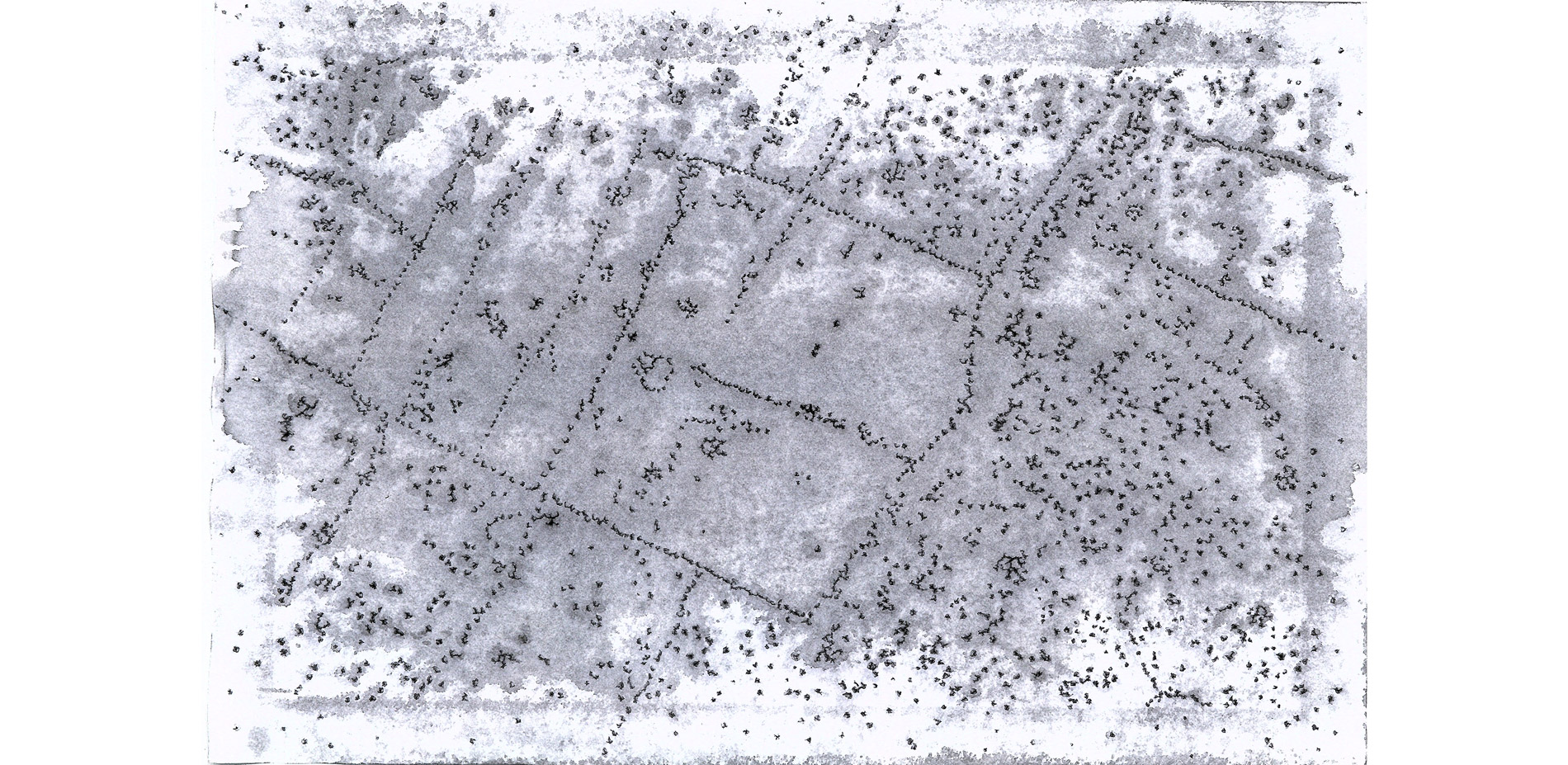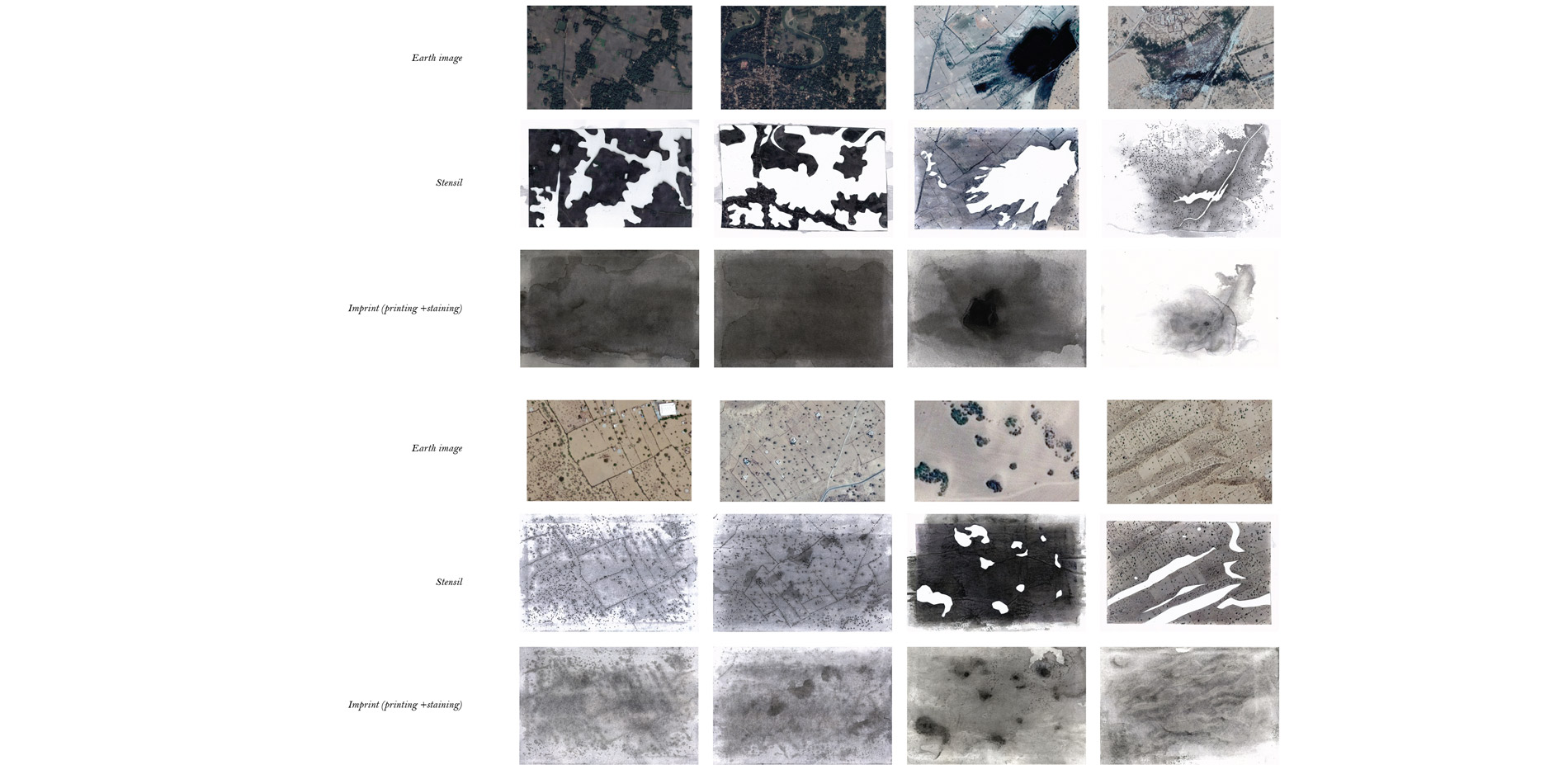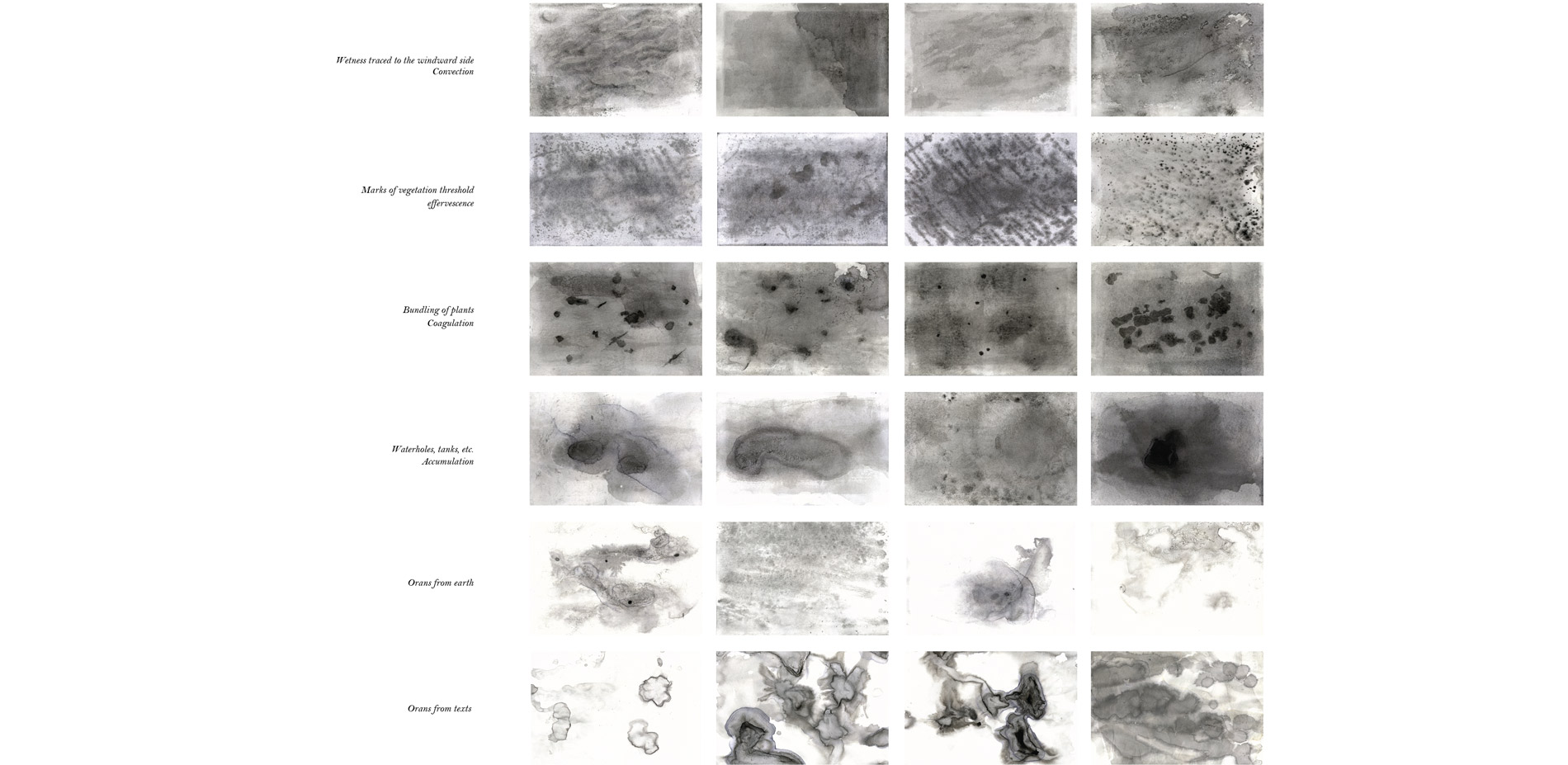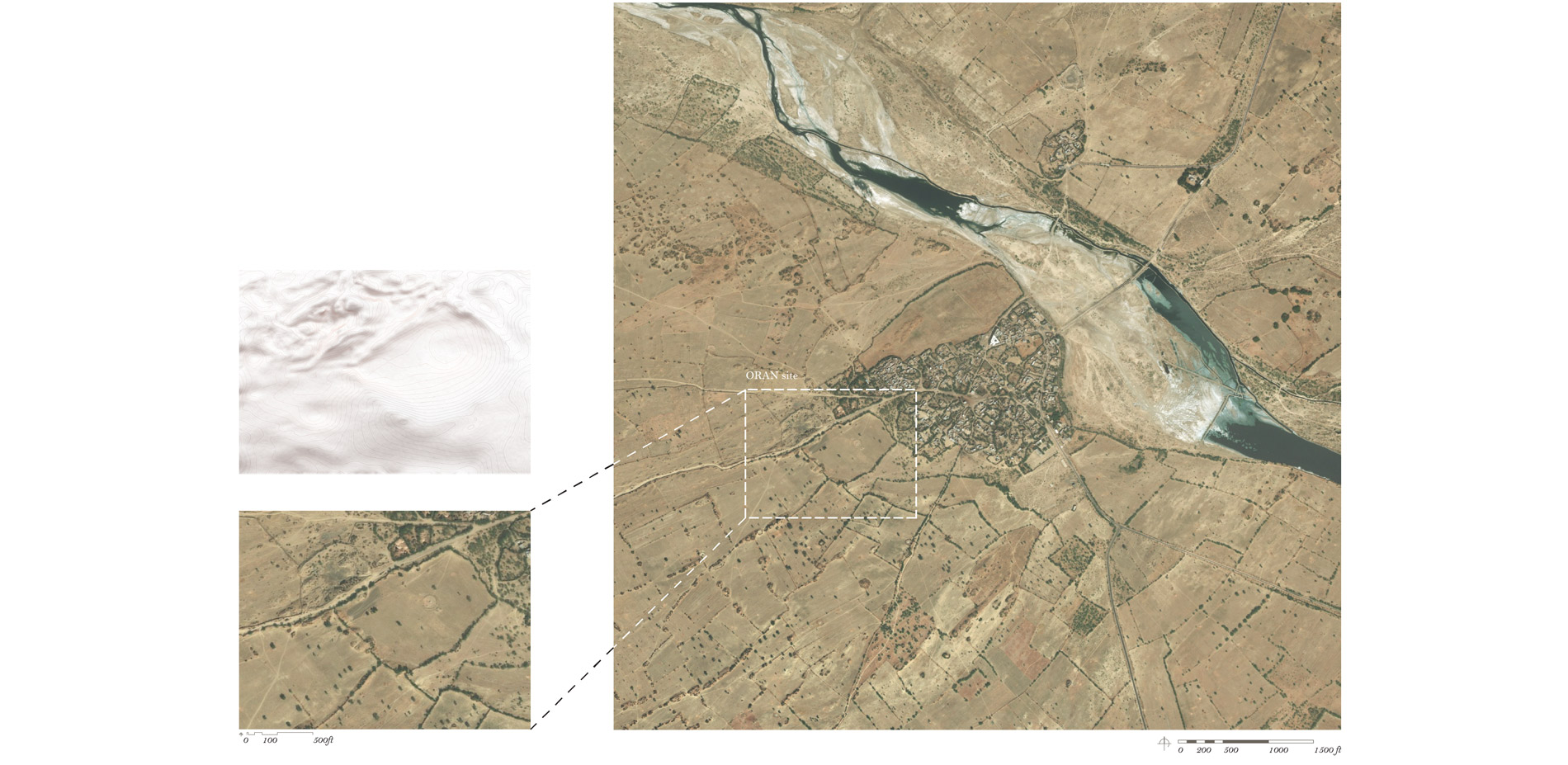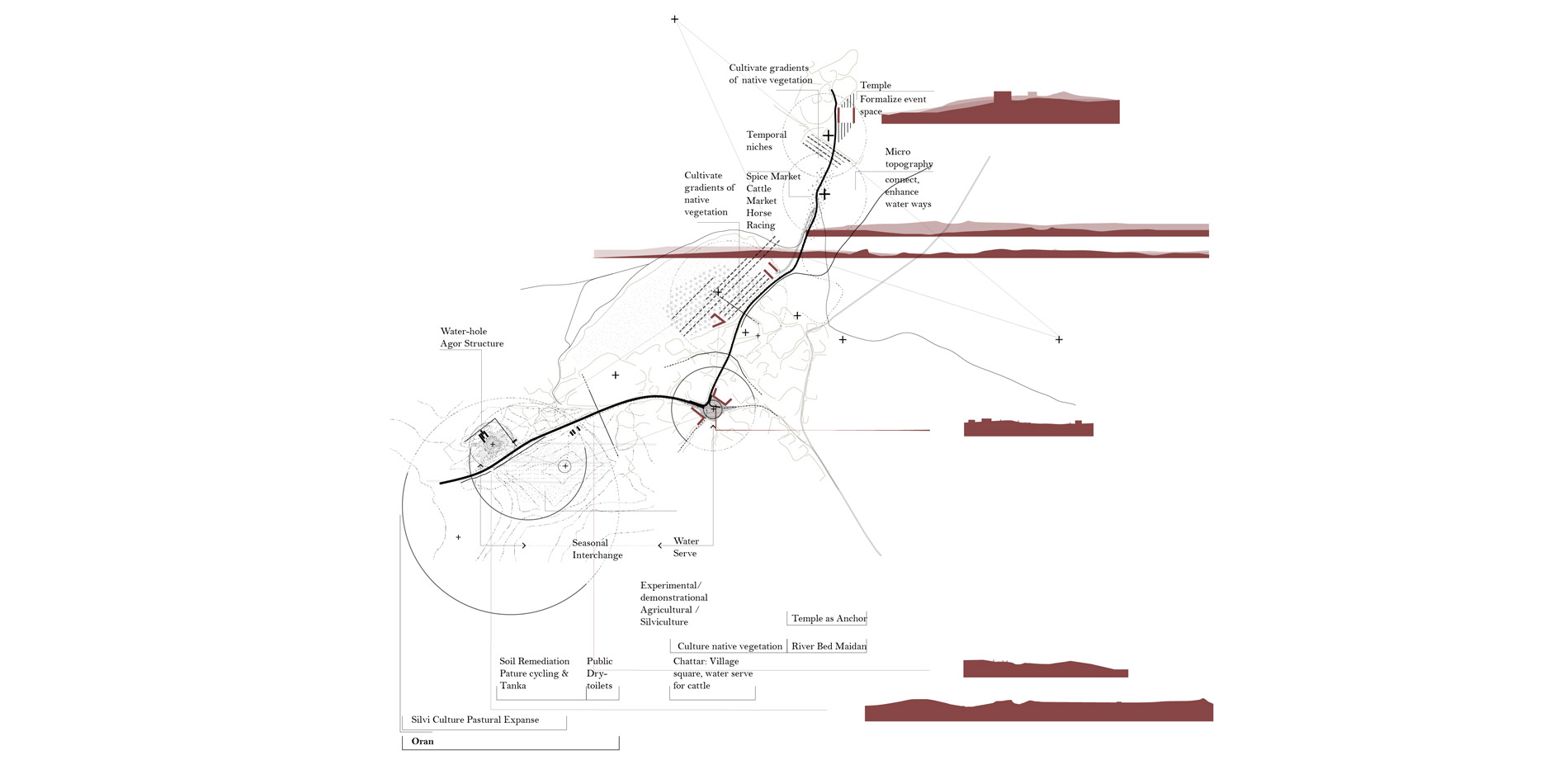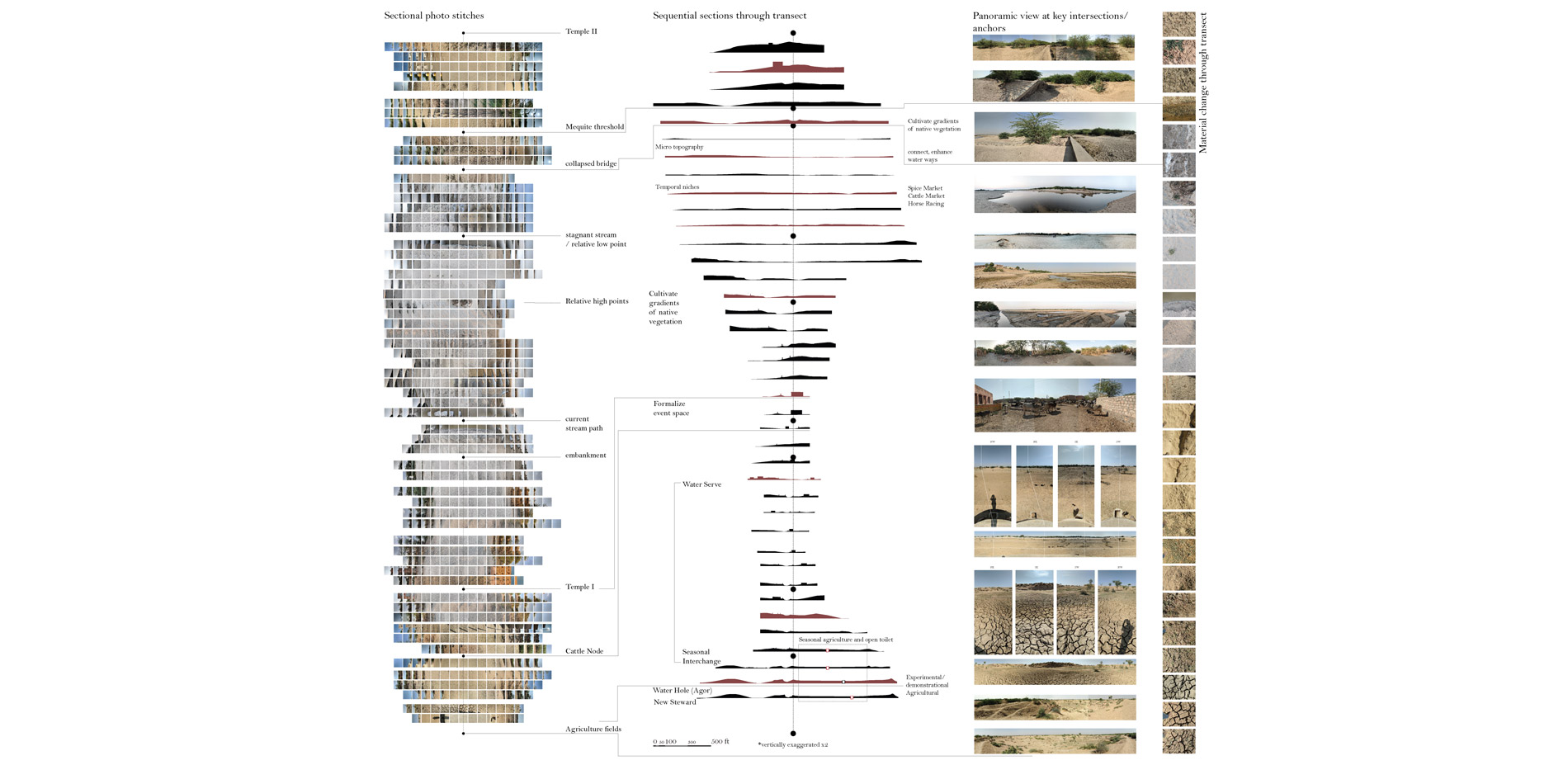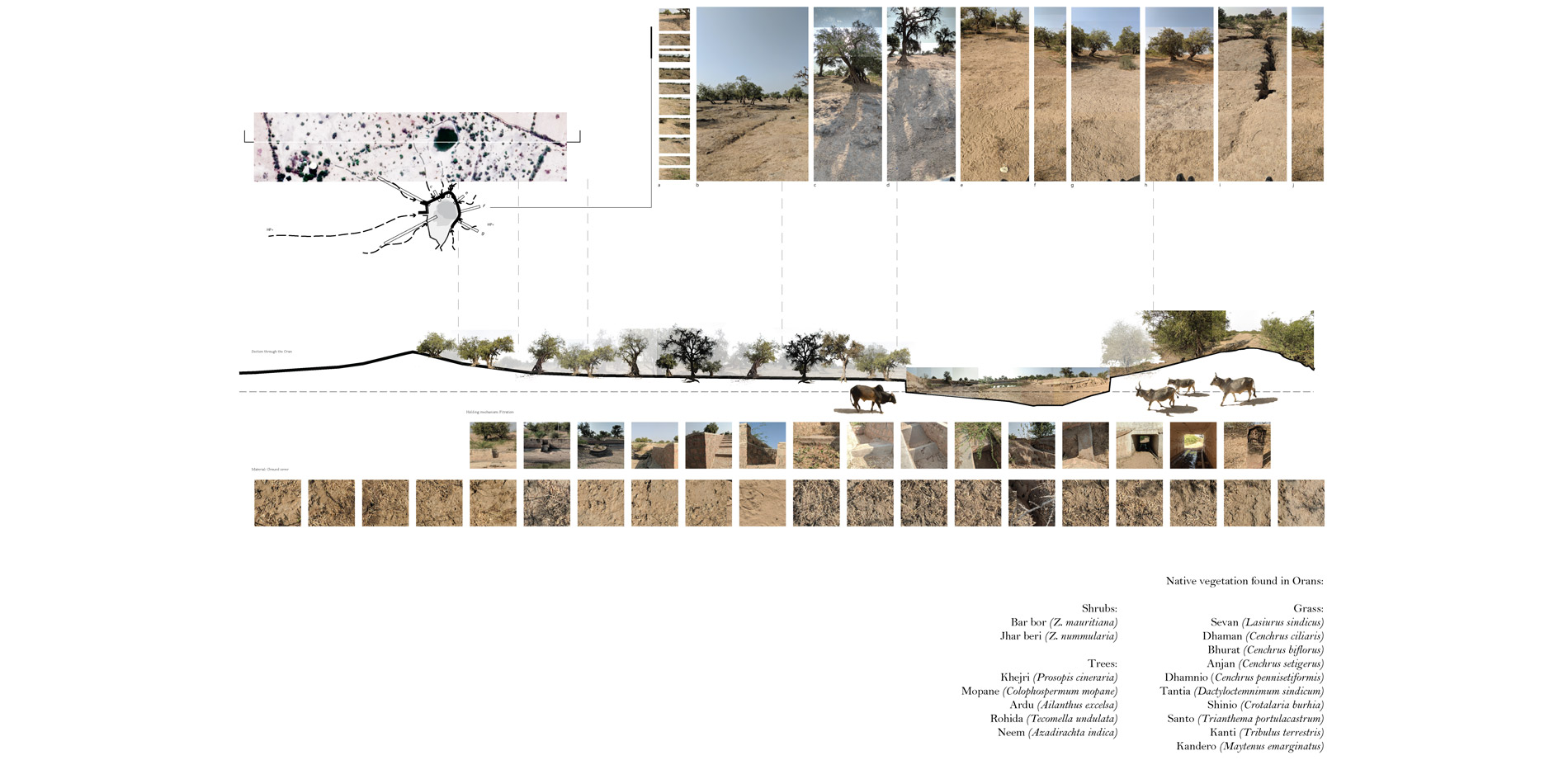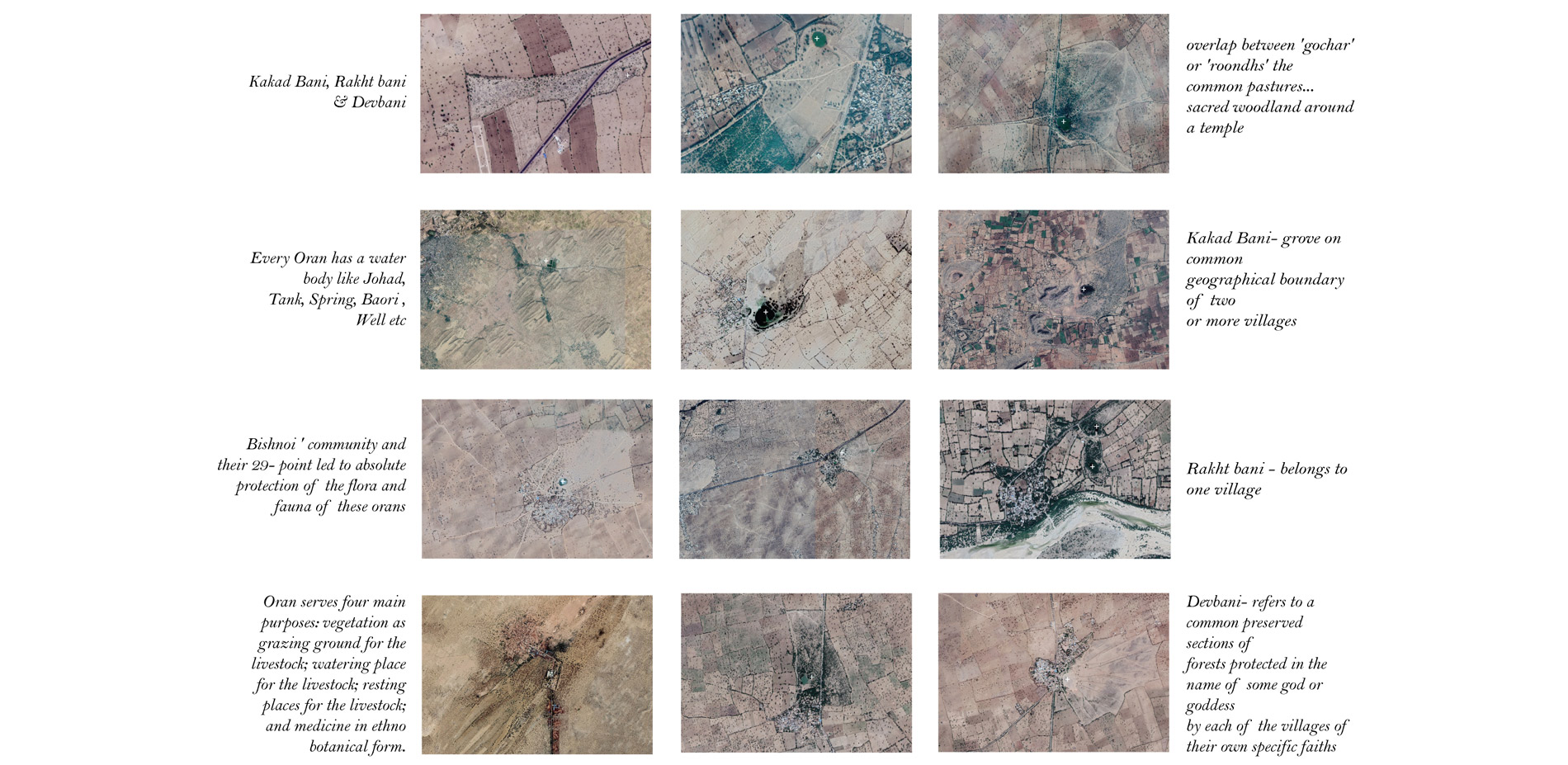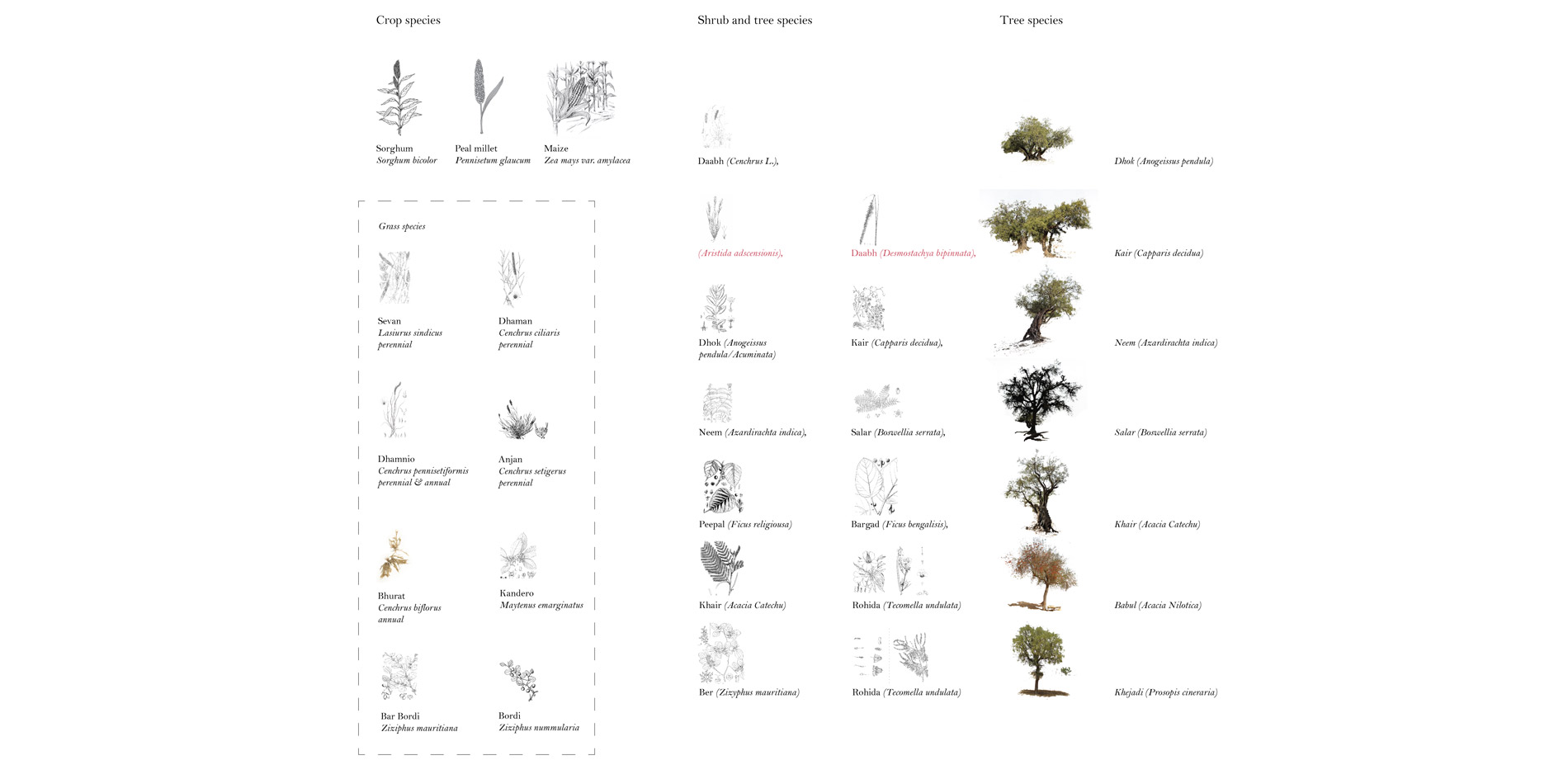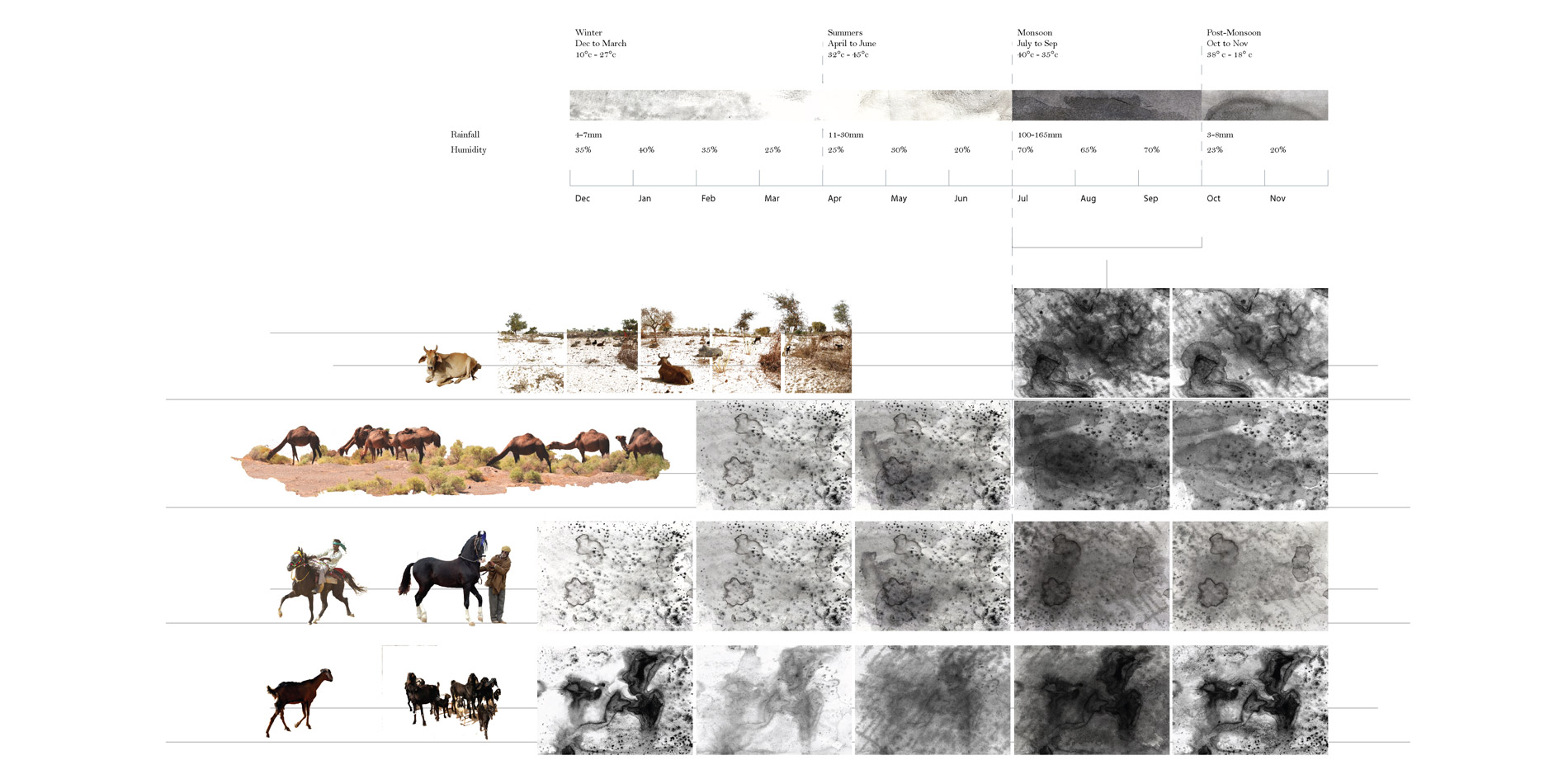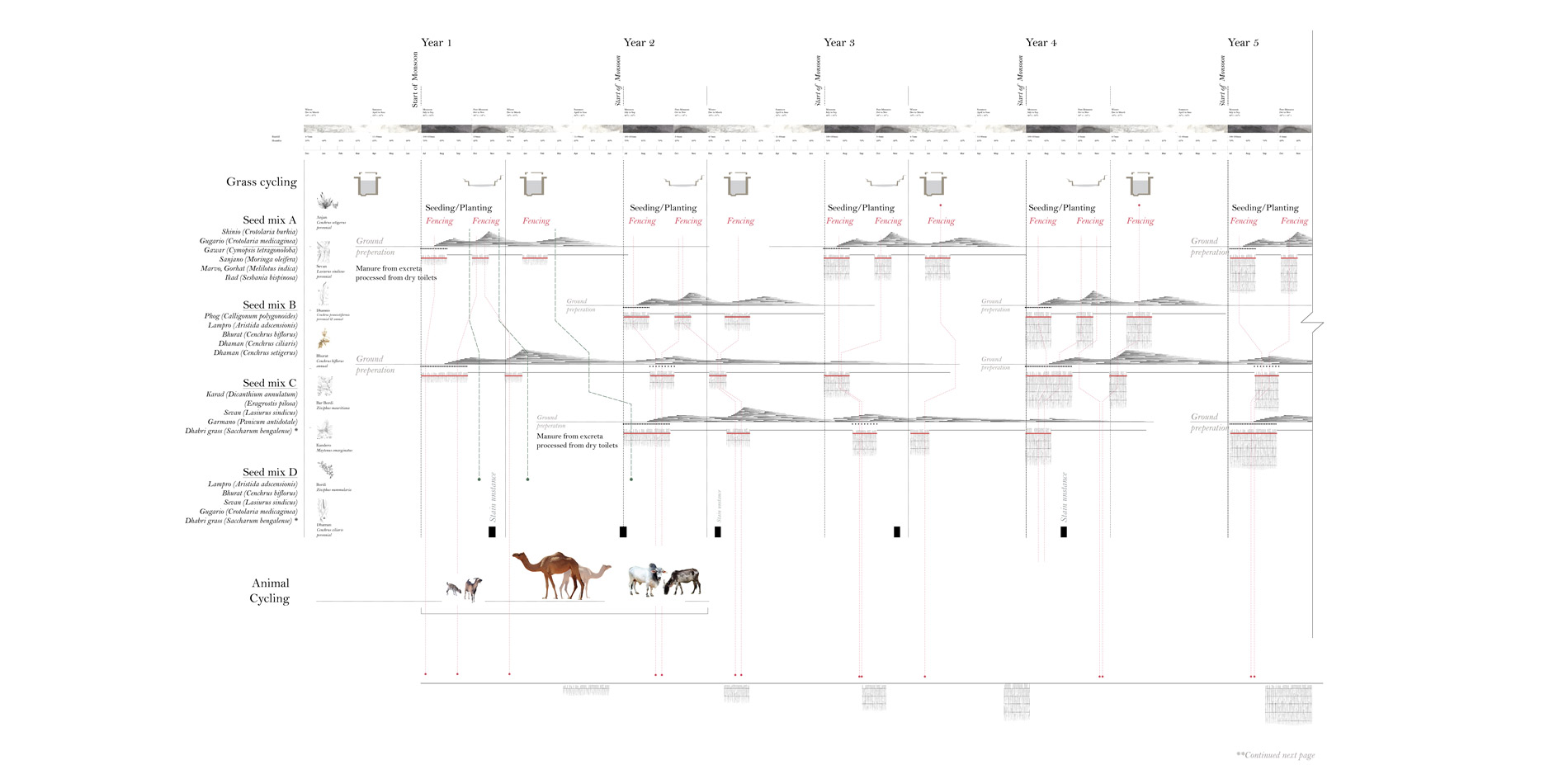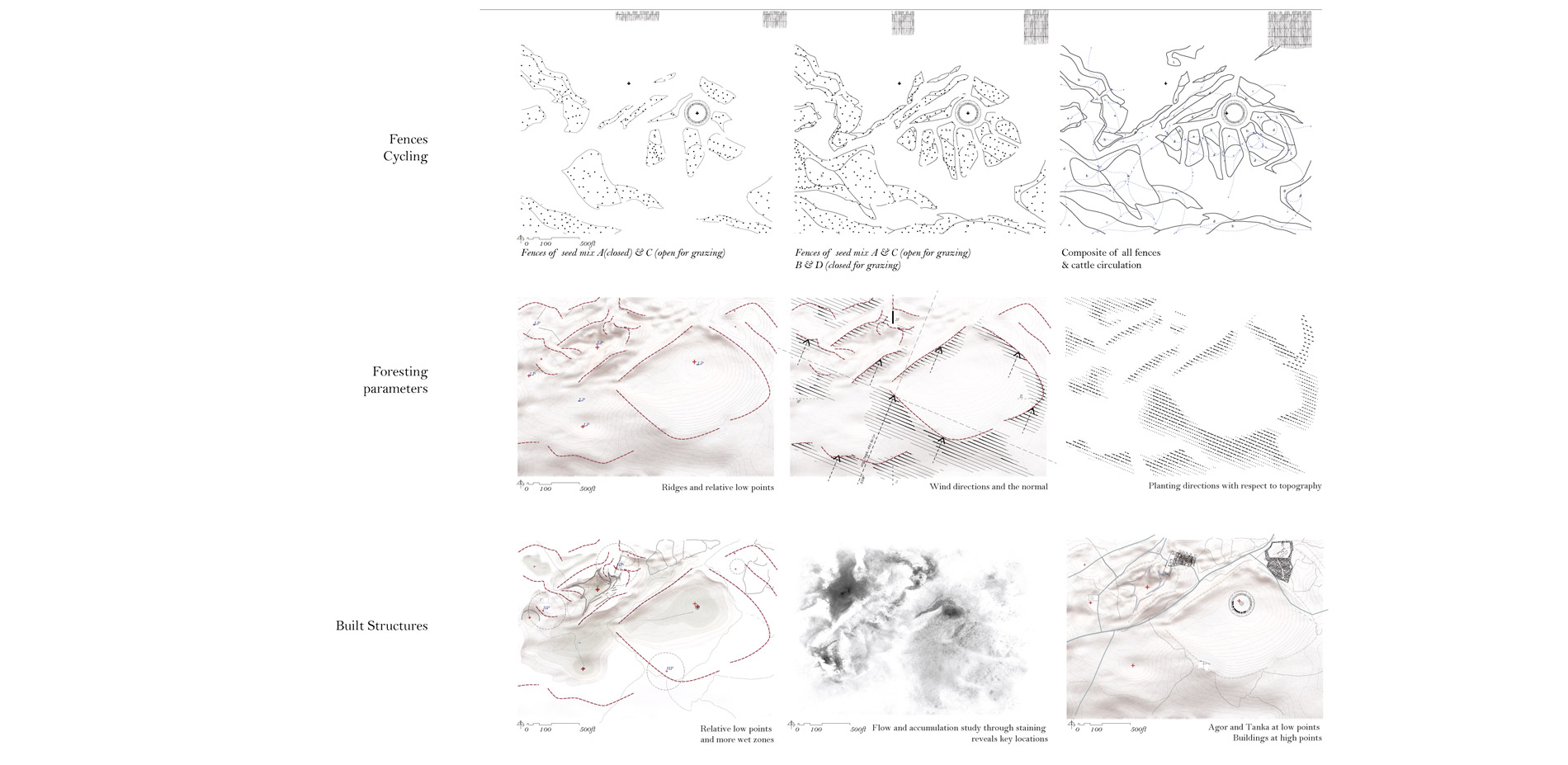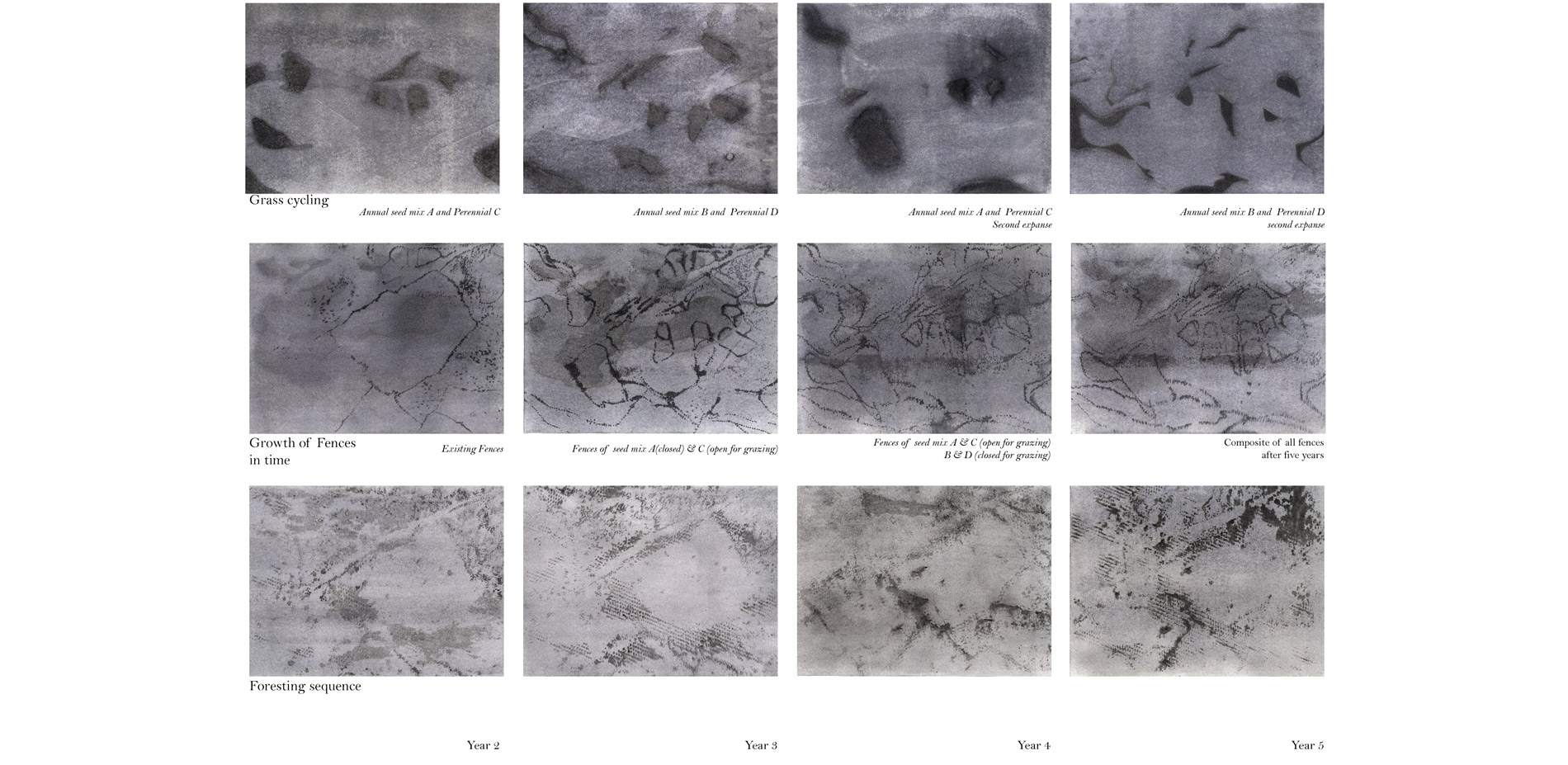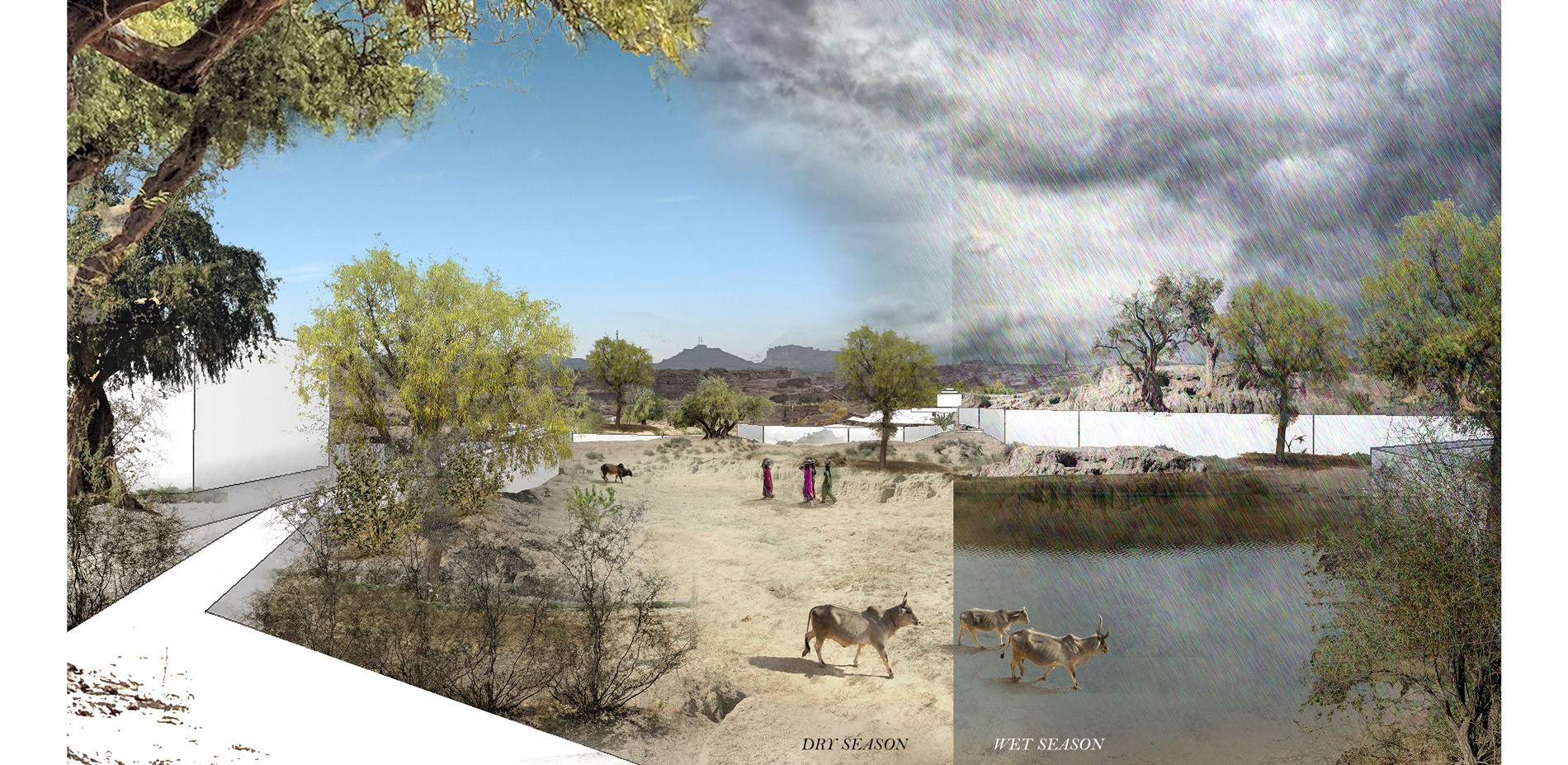Wetness Behind the SC/EEN: Re-wetting the Oran
HONOR AWARD
General Design
Tilwara, Rajasthan, India | Cyrus Sohrab Khan, Student ASLA | Faculty Advisors: Anuradha Mathur, ASLA
University of Pennsylvania
Some of the most beautiful drawings in any of the submissions. A deep ecological component behind this. Very powerful.
- 2018 Awards Jury
PROJECT CREDITS
Scholarly reference:
- T.I. KHAN∗, ANIL K. DULAR and DEEPIKA M. SOLOMON, Biodiversity Conservation in the Thar Desert; with Emphasis on Endemic and Medicinal Plants
- Aman Singh and Pratibha Sisodia, Oran - A traditional biodiversity management system in Rajasthan
- R.K.GOYAL, V.C. ISSAC, Rainwater Harvesting Through Tanka in Hot Arid Zone of India
- Anuradha Mathur: Neither Wilderness nor Home: The Indian Maidan
- Pradeep Chaudhry∗, Naveen K. Bohra, Karna Ram Choudhary, Conserving biodiversity of community forests and rangelands of a hot arid region of India Contacts: Arna Jharna: The Thar Desert Museum
Additional Photo Credits
- Anuradha Mathur
PROJECT STATEMENT
India, a country rapidly moving toward contemporary aspiration of urban livelihood. Looking down upon their thousand years old traditions, which are considered as signs of backwardness, where as some of these practices are well complied with contemporary world. This project tries to extract one of these neglected and unknown practices in the desert of Rajasthan, called "Oran" –a system of settling around a multipurpose forest and maintaining it through generations. The method of extraction tried to break the dichotomy of traditional representation of looking at a dessert but opened the conversation and revealed the project when looked at it as imprints of wetness. The design project revolves around the idea of An enhancement of traditional Diverse ecological system as a Performative Landscape. The project is unique in its exploration method. It engages the unknown terrain of the Thar desert and a performative Landscape of the Oran, through a new lens of embodied wetness.
PROJECT NARRATIVE
The primary exercise of the studio was to counter the tradition reading of Rajasthan, with a "slowness and distancing of the analog" with imprints and montages. Much of this imprint, however, lies behind the scene. In this case the imprints were the practices of staining. Staining as a lens of re-enacting embodiment of wetness in the landscape.
The revelation of Oran started with a method of exploration through staining, by looking for imprints of wetness from satellite images. These stains helped to identify marks of vegetation thresholds, fences, clustering of plants in windward side of hills, accumulation of wetness through water tanks and water holes. The stains started to recognize a certain pattern of vegetation clustering and accumulation of humidity, which led to the re-discovery of the Oran. Understanding Oran was the integral in the earlier stages, which showed how a traditional forestation, not designed by any professional can become a sustainable practice for surrounding communities and as well as ecologies to grow.
Oran also referred as community forests/rangelands, in the western arid part of India, constitute a significant proportion of the total geographical area of the region. Given the economic importance of these areas from time immemorial, the local people took special care to protect and sustainably utilize these common property resources. It is estimated that there are about 25,000 sacred groves and other sanctified ecosystems, varying in size between 0.1 ha to 500 ha, in Rajasthan. Areas protected by religion include sacred groves (Deora, Malvan, Deorai, Rakhat bani, Oran, etc.), sacred corridors (Deo ghat), temple forests (Mandir van) and sacred gardens. The practice began for animal husbandry, as land was kept aside as Gauchars (pastural lands). To discourage cutting of trees, some of these agricultural and community pasture lands have been pledged to deities and local heroes, as protectors. It has a deep religious root and an ethnomedicine source, food source in times of famine. It influenced communities to grow along and as stewards of forest. The larger area of forest a community has, the more respect and prestige it gets from other communities.
The Oran sizes range from 0.1 Ha to few hundred Ha. These gardens were managed and governed by Community wisdom, but modern education and practices has marginalized these into contention, questions their relevance.
Some of the issues faced by these Orans:
- Land degradation and encroachment
- Break down of traditional institution & Disappearing traditional farming
- Fragile ecosystem
- Excessive grazing
- Pastoral based rural economy losing its relevance
- Diversion from other uses
- Modern education marginalizing traditional knowledge
- Lack of governance and land management
These ecologies demand the cultivation of an eye that looks beyond the scene, the imprint to engage, and an itinerary that intersects with the practices of people. The project tried to address these issues by analyzing traditional Orans and looking at potential site for new Oran.
"Oran" – reviving performative landscape system
The Orans visited, consisted of elements like
- Trees at least few centuries old
- Location at the end of a village/community
- No existence of non-native plants like Prosopis Juliforia (widespread in Rajasthan)
- Water hole, open for cattle
- Naturally formed swales visible in the terrain to give a sense of its catchment area
- both an open and closed water tanks called "Tanka"
Looking through satellite images and visiting in person, a site nearby at the back of a village showed all the opportunities of a Oran being present. But locals have denied of any. Moreover, they said that this area was used as an open toilet, which is a common practice in rural India. But it had all the identifiers similar to other Orans, like old trees and trees of agriculture, water collection of a large catchment area, traces of water hole that can only be created in monsoon season. So, the site had all the possibilities to become a New Biodiverse system representing "Oran".
Programs
Through the transect, from the back of the village, through Tilwara, through Luni, to the temple on the other side, there were certain scopes of other programmatic interventions along with the Oran.
Such as-
- Formalizing temple event space
- Working with micro topography of the river "Maidan". And at the end where there were opportunities of reviving the Oran, and the pastoral expanse.
Mechanisms within the design of the ORAN include:
- Silviculture scheme
- Foresting parameters
- Grass cycling
- Cycling of animal types
- Alternate changes of fences
- Addition of built structures
- Water hole/ agor-space walls to give it structure and filter debris
- Building areas to serve research institutes and temple
- Public dry toilet- a programmatic need
Apart from built structures and a robust detail of grass cycling and alternate fencing was needed, to contain overgrazing. The grass cycling consists of seed mixes divided into annual a and b, & perennials c and d.
Zones of all the seed mixes are fixed. Seed A and C are planted in the first year. As indicated in the diagram (Grass cycling and Fencing). Fenced off at the beginning, Grass A and C begin to grow. After a significant volume is achieved, they are opened for grazing. Throughout the year intermediate and alternately, A and C are fenced off for room for growth.
After 1st year, Seed A zone is rested, and seed B and D is planted. Seed mix C being perennials continue to grow and grazed upon. Until B and D reaches a significant volume. Then the region of C is rested and only opened during another fenced regions or drought. This cycle alternates and continues in the coming years. During this time, it is expected that living fences reach an optimum height and volume. Along with grasses animal types are cycled, between cattle, goats and camels.
Coming to the last part of the five years, task now is to designate a steward which is a necessity for the sustenance of the Oran. Some of these can be- A research institute and which provides of educational seminars on pastural and agriculture practices; secondly a temple as a religious steward. The latter being a permanent "pledged" steward on behalf of the village.
Changes in throughout the five years is anticipated diagrammatically and represented through staining. It is imperative to look through the lens of staining since wetness is everywhere, importance of which is more so in the desert landscape. Staining is an attempt to cultivate the eye that looks beyond the scene to engage the ecologies and people. It can be expected that once the integrity builds up, the wisdom and technology will be transferred to another Oran, and later to hundreds of communities those can help enhance the system which is connected, healthy and set an example of sustainability, which is acquired from traditional knowledge.
